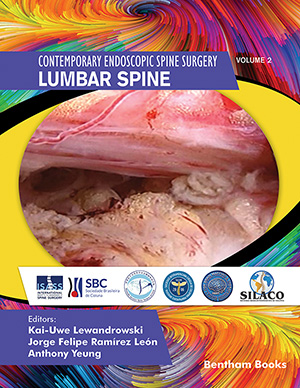Abstract
Commonly employed transforaminal decompression techniques may use the
“inside-out” and “outside-in” technique, not as a standalone technique, but as a
combined technique that considers different surgical philosophies. The inside-out
technique calls for an initial emphasis on visualization of the intradiscal cavity with the
endoscope by advancing the working cannula inside the lumbar intervertebral disc for
intradiscal examination when appropriate. In contrast, the outside-in approach places it
initially into the neuroforamen and lateral recess. The authors present an illustrative
case series of 411 patients in whom they employed a hybridization of these two
techniques because they found it to be more reliable in cases of end-stage degenerative
vacuum disc disease. The study group consisted of 192 (46.7%) females and 219
(53.3%) males with an average age of 54.84 ± 16.32. The average follow-up of 43.2 ±
26.53 months. Patients underwent surgery for herniated disc (135/411;32.8%),
foraminal spinal stenosis (101/411;24.6%), a combination of the latter two conditions
(162/411;39.4%), or low-grade spondylolisthesis (13/411;3.2%).
Results of our clinical series showed a significant reduction of preoperative ODI and
VAS for leg pain of 49.8 ± 17.65, and 7.9 ± 1.55 to postoperatively 12.2 ± 9.34, and
2.41 ±5 1.55 at final follow-up (p 0.0001), respectively. Macnab outcomes were
Excellent in 134 (32.6%), Good in 228 (55.5%), Fair in 40 (9.7%), and Poor in 9
(2.2%) patients, respectively. There was end-stage degenerative vacuum disc disease in
304 (74%) of the 411 patients; 37.5% had Excellent and 50% Good Macnab outcomes.
Patients without vacuum discs had Excellent and Good 18.7% and 71.% of the time.
With our hybridized technique, patients with end-stage degenerative vacuum disc
disease did very well with the endoscopic decompression procedure. Improved clinical
outcomes may be obtained with the direct visualization of pain generators in the
epidural- and intradiscal space. It is the authors’ preferred transforaminal
decompression technique
Keywords: Clinical outcomes, Inside-out, Outside-In, Transforaminal endoscopy






















